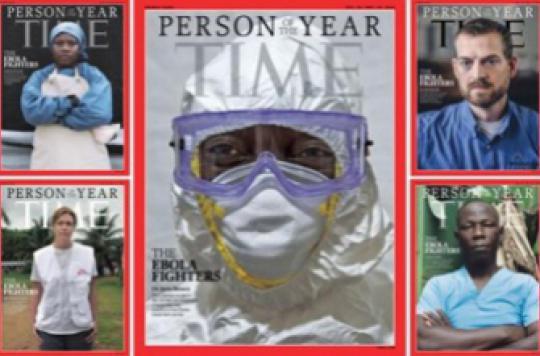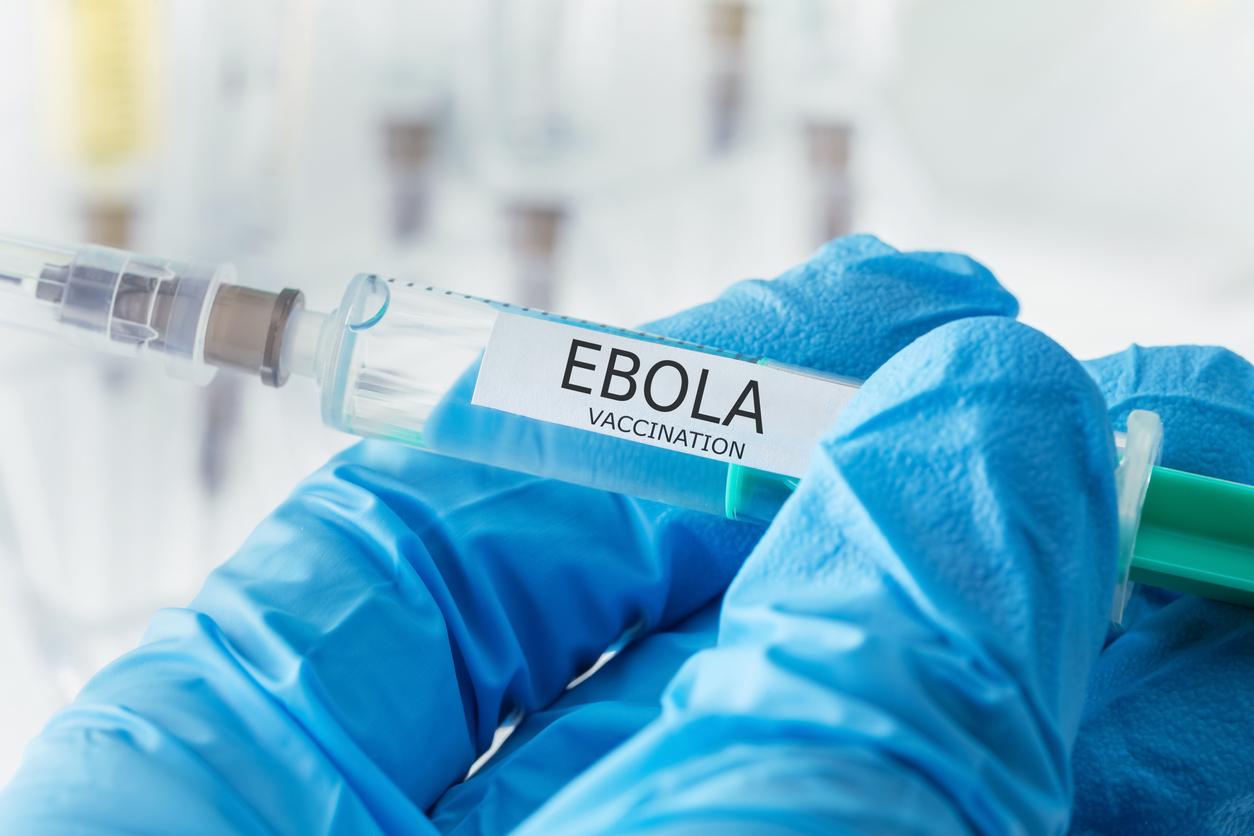Ebola, chikungunya, dengue, or even an unprecedented strike by French doctors at Christmas, 2014 saw strong health news.

The American magazine Time elected the nursing staff who fight against Ebola in West Africa, personality of the year. So, for those who missed a key episode that agitated the medical sphere this year, the writing of why actor offers a retrospective of the last twelve months.
End of life: Dr Bonnemaison acquitted and the Leonetti law revised
The year ends with a major health, political and societal debate: the end of life and the right to die with dignity. It begins in May with the trial of Dr Nicolas Bonnemaison who risked 5 months in prison. The trial ends in June, with the acquittal of the doctor. Accused of having poisoned 7 of his patients, the emergency physician was, however, removed from the Order of Physicians. A decision confirmed and made final on December 30 by the Council of State. Far from being a serial killer, the doctor ended the care of vegetative or terminally ill patients in order to allow them to die with dignity, but outside of any protocol. No family of the deceased has lodged a complaint and some even supported him in his legal fight, as well as a hundred practitioners who strongly protested against his radiation. This affair has revived the burning question of the end of life in France.
From the Leonetti law applied in 2005 which prohibits therapeutic relentlessness to the Sicard report in 2012 which recommends the injection of a lethal substance to a patient at the end of life at his own request, the subject is effectively subject to heated debate over the past 10 years. But the new report written by deputies Alain Clayes and Jean Léonetti unveiled in mid-December could change the situation. No revolution in sight, but a very probable extension of the Leonetti law, little known, badly applied, badly explained. And more room for the words of patients. In fact, patients at the end of their life or in a vegetative state will benefit frome two new rights to die : the latter may require doctors to stop treatment and sedation “deep and continuous until death”. In addition, the “advance directives” – a kind of will written by patients which allows them to express their opposition to therapeutic fleshing – will have a binding character whereas until now they were merely indicative.
An unprecedented strike by doctors at Christmas
“Between 60 and 80% of general practitioners and specialists will be closed today depending on the region, welcomed, on December 24, the president of the CSMF (1), main union of liberal doctors, Dr. Jean-Paul Ortiz. If we combine the practitioners who work in clinics and those who have their own practice, we are 80-90% strikers. Never seen ! “
With this unprecedented mobilization the anger of French doctors will certainly have reached its climax in 2014. To understand, the entire profession (liberal, clinics, emergency doctors …) is mobilized against the Bill Health of Marisol Touraine which should be debated in Parliament in spring 2015.
Among the demands of the strikers is the generalization of third-party payment, the territorial reorganization of care with the increased power of the Regional Health Agencies (ARS), and the redefinition of the public hospital service. On this last point, liberal doctors denounce a bill “centered on the hospital”, heralding “the death of liberal medicine.” This would threaten in particular the freedom of installation of professionals.
Among the latter, we also find general practitioners and their union (MG France) who want the Minister of Health to put an end to amendment 19 which deprives general medicine of the consultation at 25 €. Finally, for them, the view at 33 euros (which dates from 2002) must go to 56 euros.
Ebola: the longest and deadliest epidemic since the discovery of the virus
The year was also marked by an unprecedented outbreak of the Ebola virus in West Africa. Declared in March, the epidemic has claimed more than 20,000 cases and 7,700 deaths in the space of 8 months, particularly in Guinea, Sierra Leone, and Liberia, the 3 most affected countries. The virus has also caused 8 deaths in Nigeria, and 6 in Mali. During the summer, the epidemic was declared “out of control”
Transmitted from human to human by direct contact with bodily fluids, the virus was transported to the United States by a doctor, who did not survive. In Europe, several countries including Spain (a confirmed case) and France trembled in the face of returns of travelers from contaminated countries or contaminated health workers but no deaths have occurred on the continent.
As of December 18, 2014, more than 3,300 Doctors Without Borders were present in Guinea, Sierra Leone, Liberia and Mali, including 306 international expatriates. Among doctors and health workers, 240 have been infected with the virus. Unprecedented figures. In addition, the management of the epidemic shows a serious inertia on the part of the WHO. Indeed, the UN organization itself acknowledged in an internal letter that it did not react in time and that the means deployed to save these African countries have proved insufficient.
The epidemic is now eroded in Nigeria and stabilized in Sierra Leone thanks to the construction of new treatment centers and the mobilization of doctors. But according to Professor Peter Piot, co-inventor of an Ebola vaccine in 1976, it could last another year.
Chikungunya: a large-scale epidemic (Polynesia, West Indies)
France was also affected by large-scale epidemics in 2014. Before those of winter (influenza, gastroenteritis), our country had to face epidemics linked to tropical infectious diseases (chikungunya, dengue). In mid-December, the number of Polynesians affected by chikungunya thus amounted to 35,000, according to a recent report from the French Polynesian health watch office (since the appearance of the virus last October).
Of these tens of thousands of cases, the authorities have recently reported 7 deaths, including that of an infant. The patients, who succumbed, all presented a fragile profile. Among them, three elderly people, one of whom suffered from chronic kidney disease, and an eight-day-old infant, infected by his mother at birth. But before Polynesia, it was the French Antilles which were also strongly affected by this virus. In Martinique, since December 2013, the estimated total number of cases having consulted a general practitioner is 72,200. And in Guadeloupe, since the start of surveillance, the total number of clinically suggestive cases of chikungunya is estimated at 81,270.
Finally, the metropothere are also many patients infected with Aedes albopictus mosquitoes. Thus, from 1er May to November 30, 2014 there are 1,492 suspected cases of dengue or chikungunya. Among them, the InVS confirmed 163 imported cases of dengue, 443 imported cases of chikungunya, 6 imported co-infected cases, 4 indigenous cases of dengue, and finally 11 indigenous cases of chikungunya (they contracted the disease without having traveled to a endemic area). An unprecedented situation since 2010.
(1) Confederation of French Medical Syndicates
|
5 digits that marked the year 47%: this is the increase in the number of IUDs recorded during 2013. The pill crisis has generated a massive delay in this method of contraception, the second most used in France, after the pill. 6,400 people who discovered their HIV status in 2012 in France, a number that has remained stable since 2007. For the first time, the number of cases diagnosed is falling worldwide. 2.1 billion suffer from obesity or overweight worldwide – a third of the world’s population. The United States, Germany and China are particularly concerned. 275 million euros, it is the turnover of the electronic cigarette market in 2013. Between 2012 and 2014, it will have opened nearly three shops per day on average, underlines the study. The e-cigarettte attracts more and more. There would be around 2 million users in France and 8 million in Europe. 1 in 8: This is the number of deaths worldwide linked to air pollution, or 7 million people. In 2012, 3.7 million people died from the effects of outdoor pollution and 4.3 million from domestic air pollution. |
.










